How to make a rug with your own hands: techniques and step-by-step instructions with examples of photos
Giving a second life to unnecessary things is a fascinating creative process. In any home you will find everything from which it is easy to make a rug with your own hands. You do not need to know how to weave macramé, knit or crochet.
Beautiful interior décor is performed from ropes, pigtails or pompoms on the basis of old knitwear or yarn remnants. It is worth familiarizing yourself with the basic techniques in order to choose for yourself the most acceptable option.
Rug making techniques
Handmade products often impress with creativity in how spectacular old socks and T-shirts look in a new incarnation. Homemade rug in the bathroom or bathroom can become an accent decoration on the background of monotonous tile linings.
Thick polyamide yarn is the best material for handmade bags, plaids and mats. Handmade women sell real masterpieces through the Internet, made in different techniques.
Mini-format and simply huge products, the whole room - round, oval, rectangular. Usually they are knitted with a large hook.
Basic techniques:
- Knitting with knitting needles or crochet;
- Knotting a bundle or a tight base;
- tying knots on the net;
- braiding with subsequent stitching.
Instead of yarn, old terry sheets and towels are often used. Two or three old towels will make a small "circle" under the feet in the bedroom. If you cut a whole set of old towels into strips, the blank will come out no worse than expensive yarn.
Note! The simpler the method, the more fascinating the process and faster the production of the chosen model. The overall aesthetics depend on the neatness of the work and the color scheme.
You can fill colored sections on the mesh in a variety of ways, including tying knots and crochet filling according to a specific pattern. These ways are simple enough, the grid can be taken ready-made or made from yarn and impregnated with acrylic paint.
Preparation of yarn for mats
Revision of old things - an invaluable "treasure" for lovers of needlework.
It is advisable to revise things in the spring and fall, at the end of the warm and cold season. This will free the closets from junk, and in the "storeroom" for handicrafts will appear a lot of improvised "yarn" of old knitwear.
Things are sorted by type of knitwear - tights, socks, T-shirts and sweaters. From this cut strips of equal width.
Useful tip: If you do the cutting diagonally, the strips will not crack. Slightly pull the strips in length - they themselves will roll up, hiding the trimmed edge.
In some cases, you need a frayed edge, which will give the rug extra puffiness, then the strips are cut horizontally, neatly wrapping around the edge of the product. It is important to decide in advance on the color scheme, so that the product looks harmonious.
Knitted products are made of synthetic and cotton threads. Artificial threads are more practical, less susceptible to rot. Therefore, a rug made of old synthetic items is suitable for bathrooms.
It is better to knit a patterned rug for the bedroom or children's room from soft "cotton". It will be nice to stand on it barefoot after sleep.
Important: Thick knitwear should not be cut with wide ribbons, so that the product will not be rough and stiff.
T-shirt, allocated for cutting jersey tapes, you need to divide into parts, removing the finishing strips with seams, sleeves and neck.
Next, the back and front part should be cut into strips of 2-4 cm, not reaching the side seam by 3 cm. Laying out on the table, make cuts diagonally across the seam to make a long strip, dissected as if in a spiral.
Luminous rug for the children's room
The original version of "grandma's circles" made from t-shirts and tights. Such products were popular in the Soviet era. They were done by crochet with regular no-neck columns in a spiral, gradually adding the number of elements to expand.
Today, under the columns, a sweat base is laid. A round jute rug is the simplest example of doing work in this technique.
Instead of jute, you can use any sturdy base, clothesline, or diode tape. A homemade luminous circle is a great solution for those who have trouble navigating in the dark at night.
A soft glow at the crib does not interfere with the child's sleep, but takes away the fear of staying in the dark without the presence of adults.
Rug from old belts
Wicker can be made from any hard-wearing material. Old straps that have frayed at the buckle can be used for a sturdy rug by the front door.
There are several designs, the most affordable:
- Weave with small gaps according to the chintz principle;
- Stitch or glue in a geometric pattern on a woven or polymer base;
- Lay in strips parallel and glue on sides butt to butt.
Leather straps can be arranged in different ways, for example, light ones in the center and dark ones on the edge. The product can be monochrome or mottled, but all buckles are removed. The edges are better aligned, you can leave the narrow cuts "chiseled" or spread out so that you get a "ripped" edge.
Useful tip! Old belts can deform from time, so after joining strips or gluing on the "sole" be sure to put a leather mat under the press.
Rug from jeans
Items made from old jeans are an inexhaustible topic for needlework enthusiasts. The durable fabric can last for decades after being recycled. It is widely used to make panels, bags, furniture covers and homemade mats.
Jeans junk should be sorted by density and color. Preparation of raw materials is very simple - disassemble the clean jackets and pants in parts, cut the seam.Then choose the preferred geometric shape:
- isosceles triangles;
- squares;
- 6-squares;
- rectangles.
Cutting a single template of the available material, lay out the segments of the future rug on the floor to visually assess the color combination.
Some craftsmen make incredible masterpieces out of denim scraps, using stitching or glue.
Tip! After completing the connection of hexagons or squares, do not forget to steam the seams, stitch the border with a face and put the rug on a lining of dense fabric.
Pom-pom rug
A doormat made of fluffy balls is a favorite in a child's bedroom. Babies love to play on such mats, thanks to the pleasant feel and beautiful color variations. It is possible to make such a model in one evening.
As raw materials, you need leftover skeins of colored or monochrome yarn. From it make puffed balls, as shown in the figure.
Spectacular pompom rug is made by fixing fluffy pompoms on a mesh base. It can be crocheted or woven from threads on a frame with nails - it will be a soft base.
Hard gluing is done on a smooth substrate. Fixing on mesh is the easiest way to fill in a geometric pattern. As you can see in the photo, mats made of fluffy lumps can be made in a variety of designs.
Rug made of braids
Those who do not have yarn, it is suggested to use braids as the basis for the rug. They are woven from the same knitted strips - cut from old T-shirts, T-shirts and turtlenecks.
The braid can be the same color, but colored mats from old T-shirts look better with their own hands. There are some nuances:
- The knitted cut is braided in a pigtail and laid out in a spiral, stitching at the joints.
- On the turning sections in some segments leave a little more ribbon "yarn", so that the corners and arcs do not pull.
- If qualitatively sew the edges of the plaits, you get a fairly durable mat, which is washed in the machine (delicate mode).
Pay attention! The softest mats are made of towels - the same braid, but it should not be tight, so that the doormat was pleasant to use.
Rugs made of small scraps
A colored pattern can be made on a grid, having previously crossed out into several segments. These segments are filled with knots - roughly the way carpet weaving professionals do it.
Each square is a segment of the pattern. Narrow pieces of the flap are tied in loops, wrapping the loose tails around themselves. Performing row by row or section by section, you can get a durable product with excellent aesthetics.
Useful tip! Narrow pieces of knitwear (any other fabric) is faster and more convenient to crochet into the mesh, regardless of the size of the cells and density of the pattern.
Rug from pebbles and wine corks
The imagination of fans of needlework is simply boundless. Amazes diligence, perseverance and patience, with which one or another version of the exclusive products "hand-made".
Every year new techniques and materials for unusual things are offered.
You, too, can get a nice rug of pebbles - your own hands are laid out colored mosaic or an ordinary path of smooth pebbles brought from the sea coast. We will need a rubber base and "liquid nails".
Important: In a couple of hours you can make a real masterpiece for the pool. Do not rush to connect the parts of the mosaic. It is better to spend twice as much time on the preliminary laying out on the floor, but make sure that the "picture" is folded safely. Then the pattern is glued to the rubber substrate with polymer glue.
Cork from corked wine bottles - another environmentally friendly material used in the manufacture of unusual mats. Such a product will always delight visitors to your wine cellar, private sauna or steam room in the country house.
Check out interesting design ideas from our photo gallery:
- A simple cat litter mat made from hand-made materials.
- Practical rug made of socks.
- Colorful doormat from old t-shirts.
- Rug from twine.
- Circle of tights "granny" method.
Soft mats and hard rugs - all these "homemade" masterpieces will decorate the interior design in any room. Depending on the material and design, rugs find a worthy place in any home.

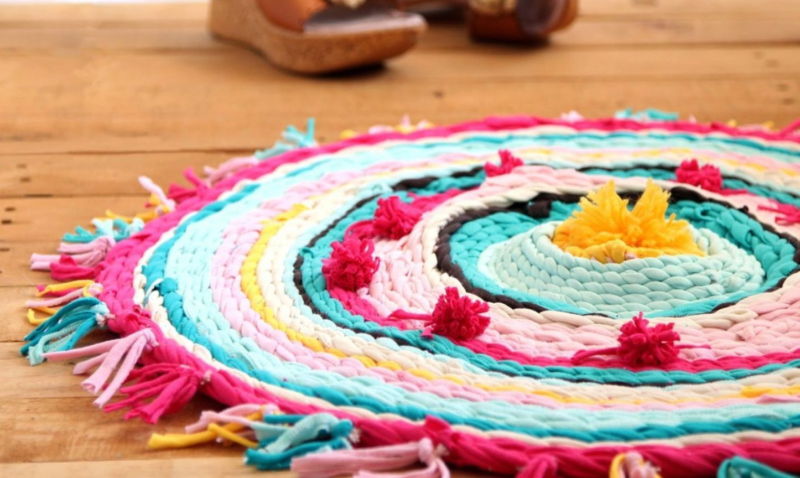
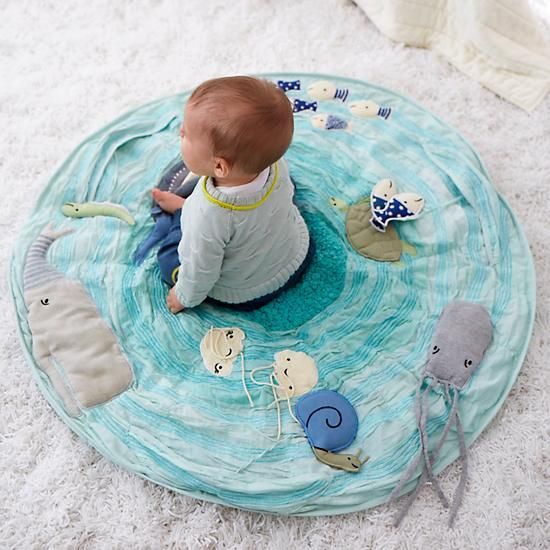
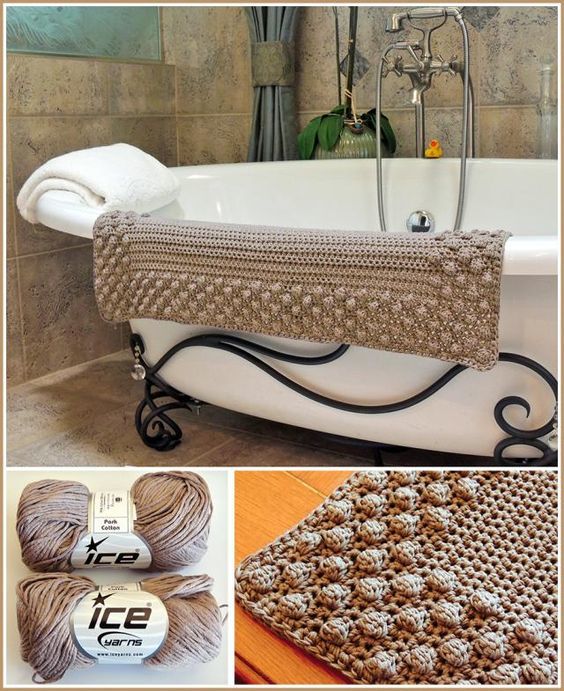
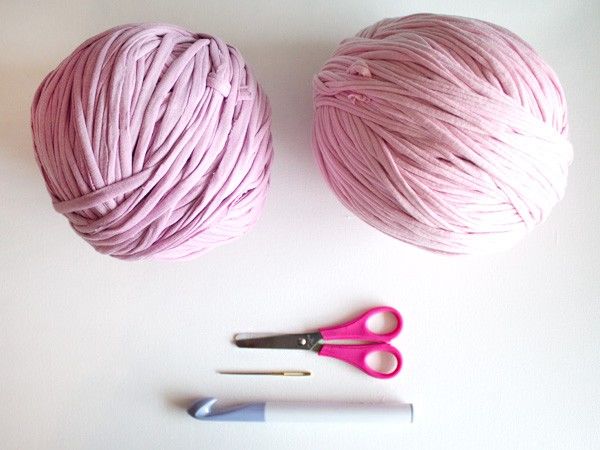
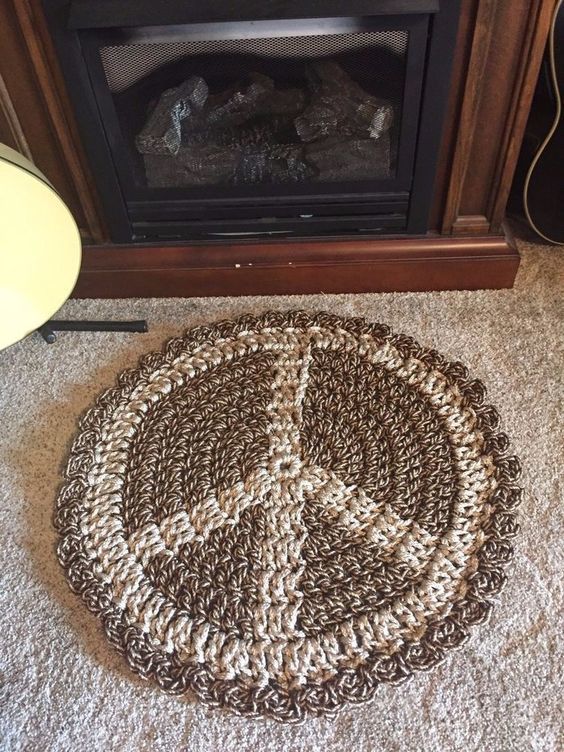
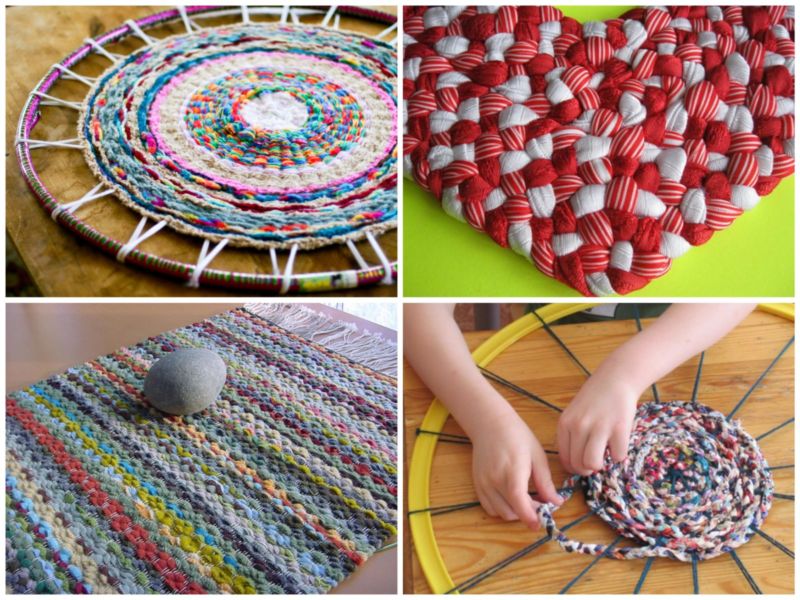
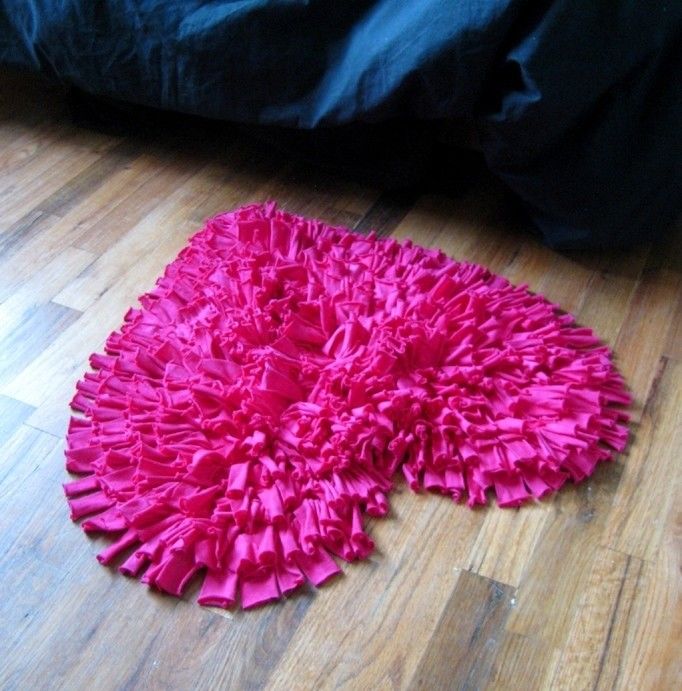

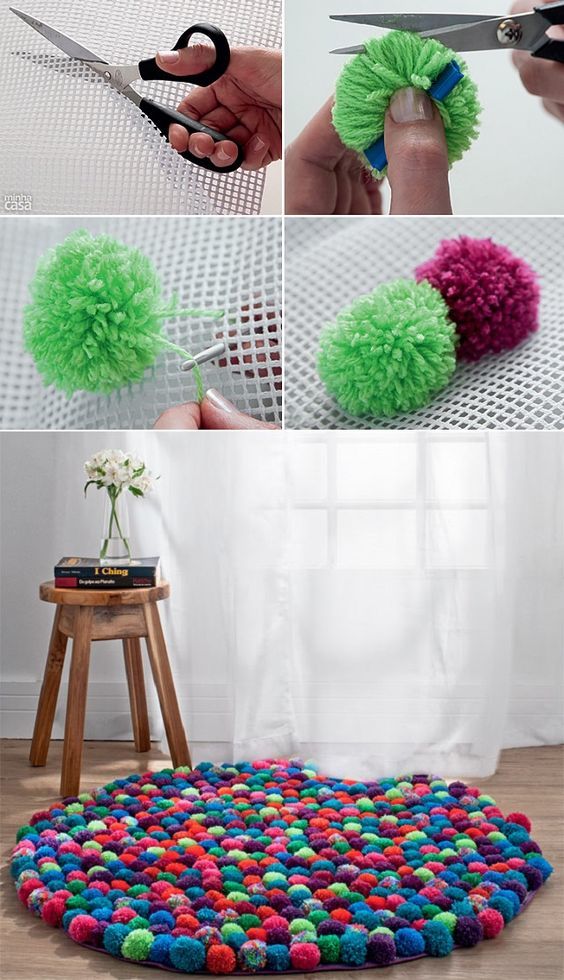
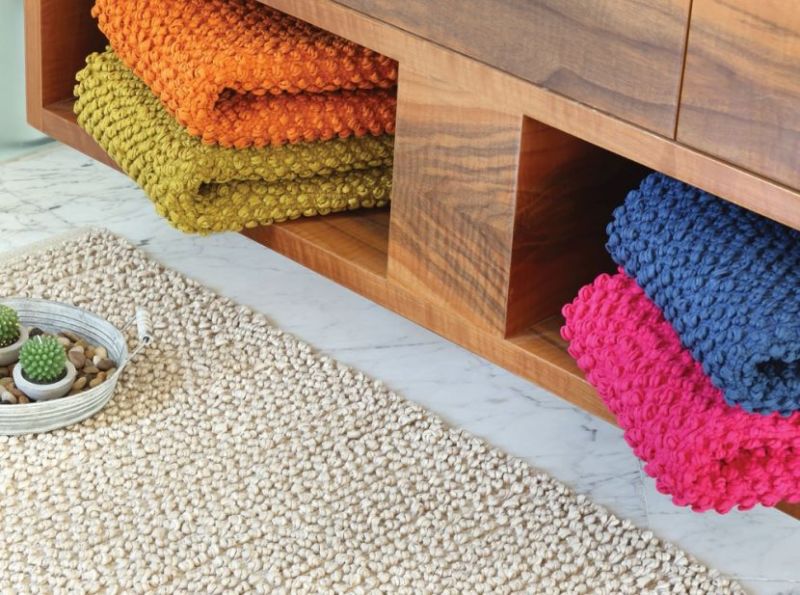
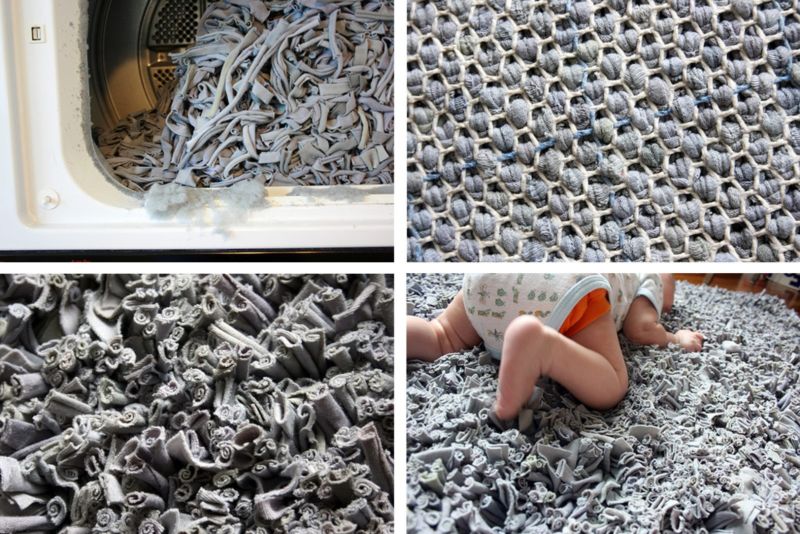
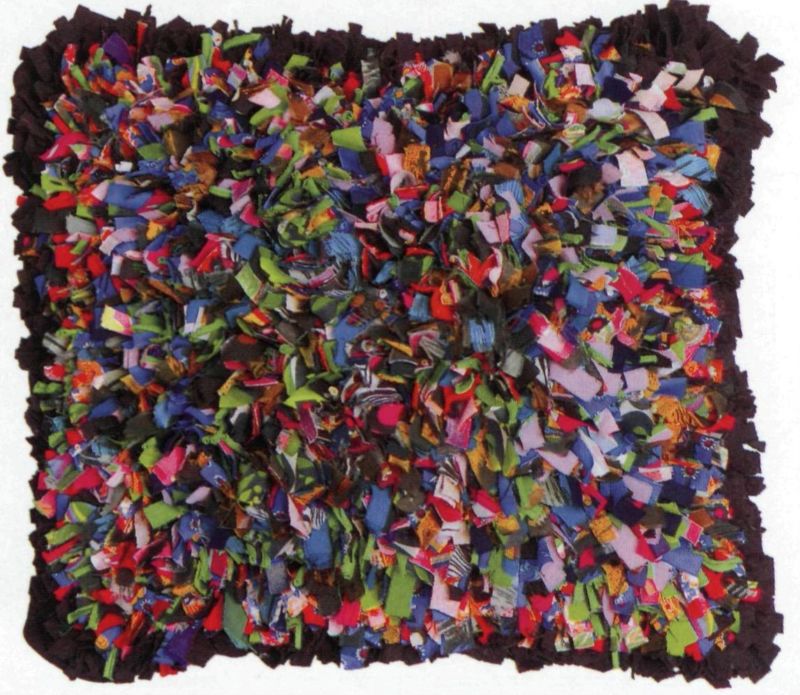
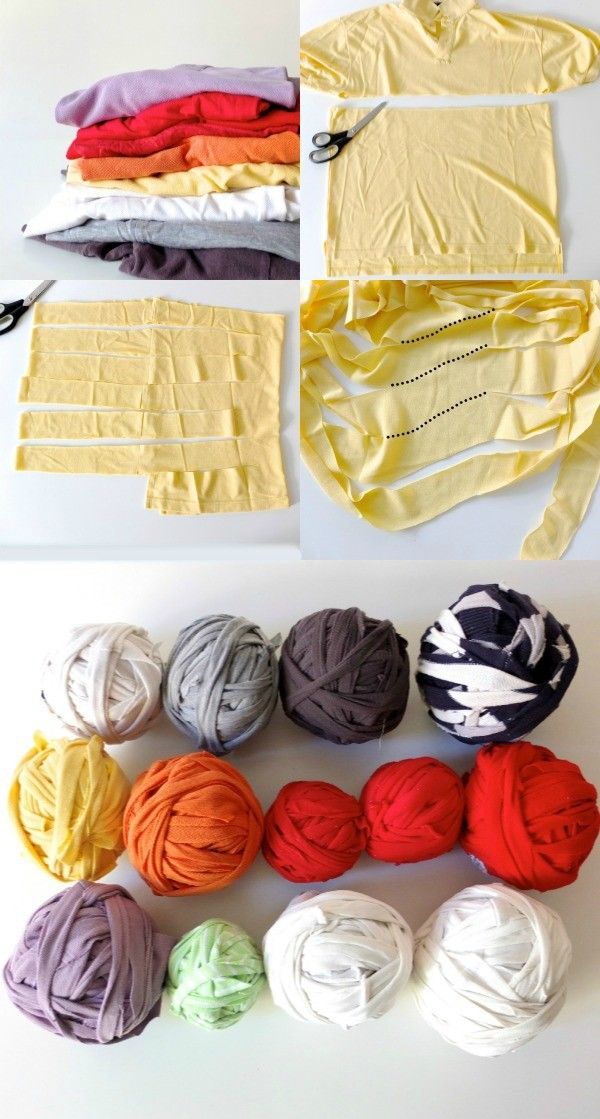
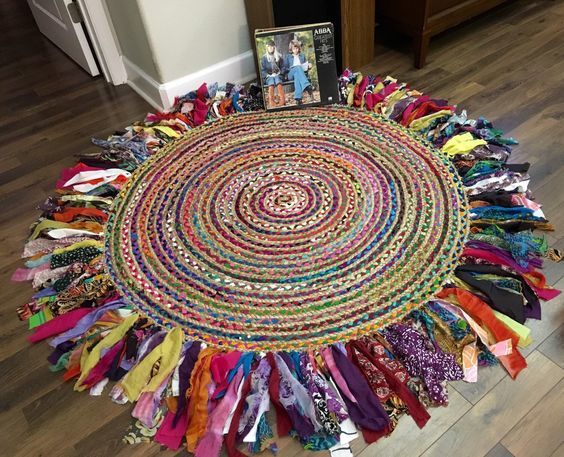
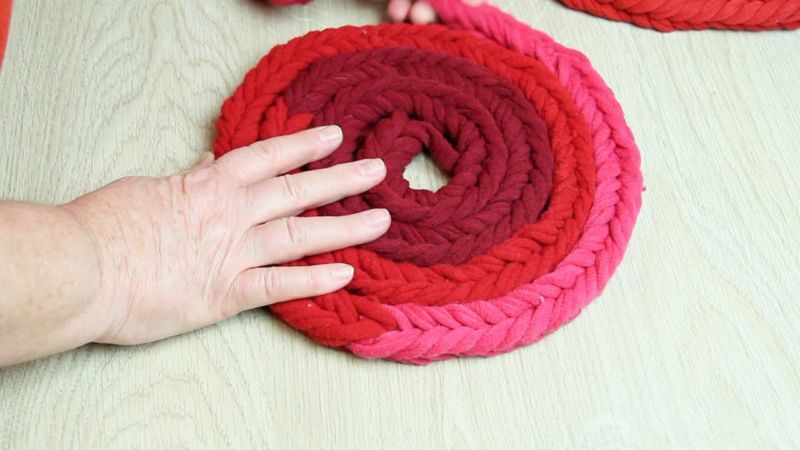
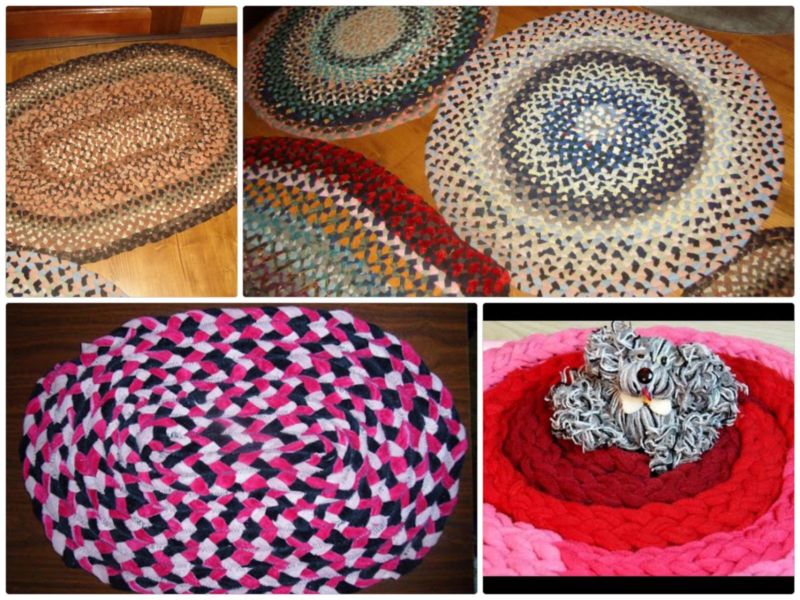
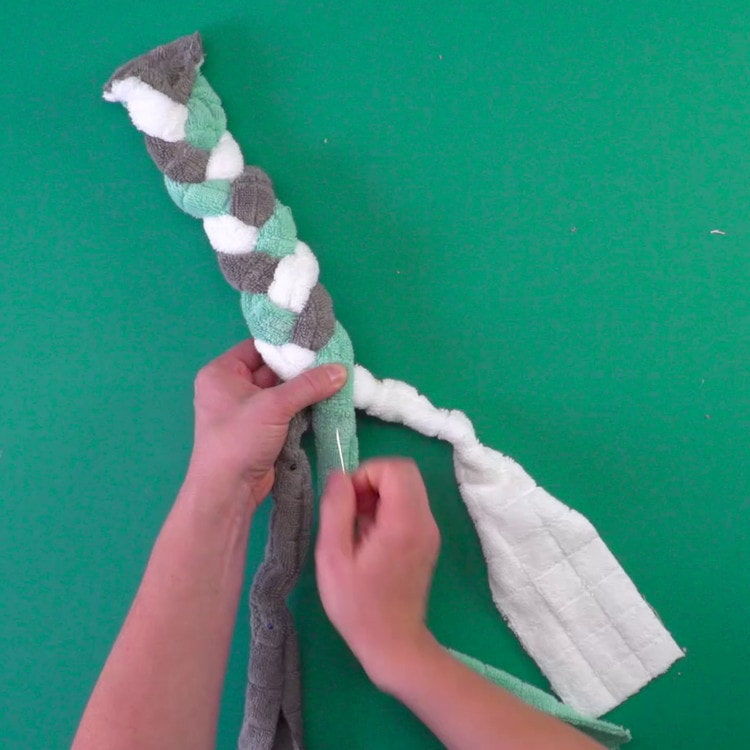
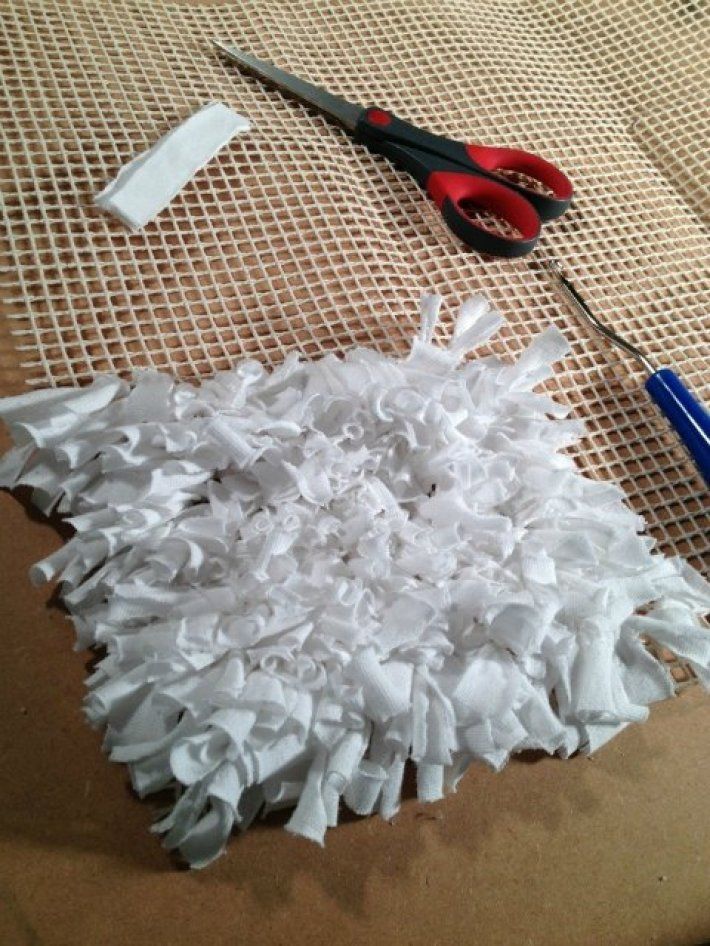

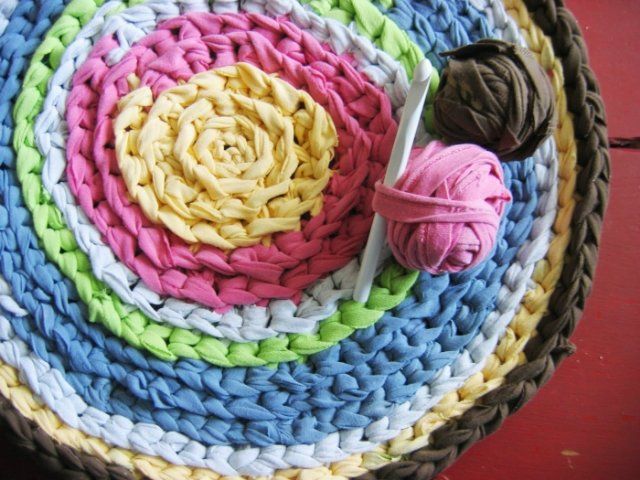


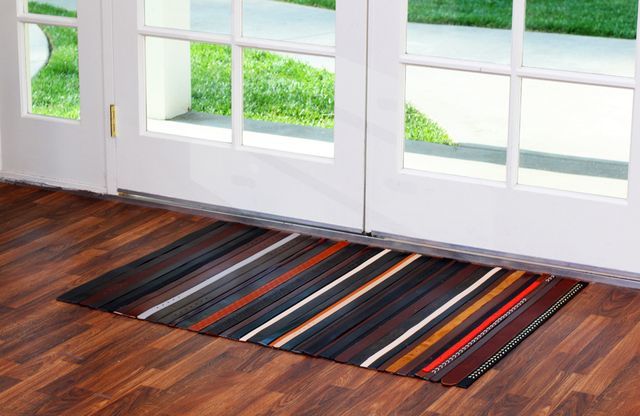
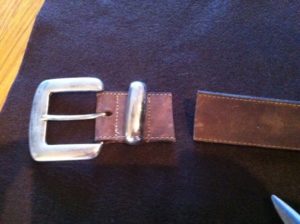
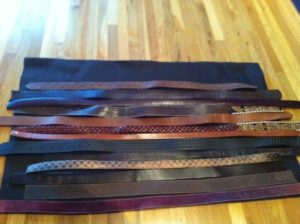
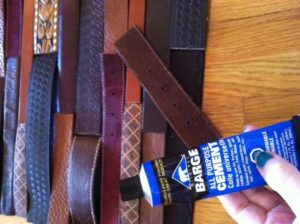
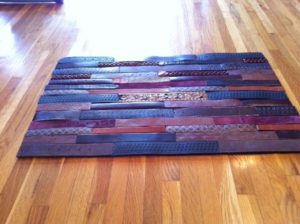
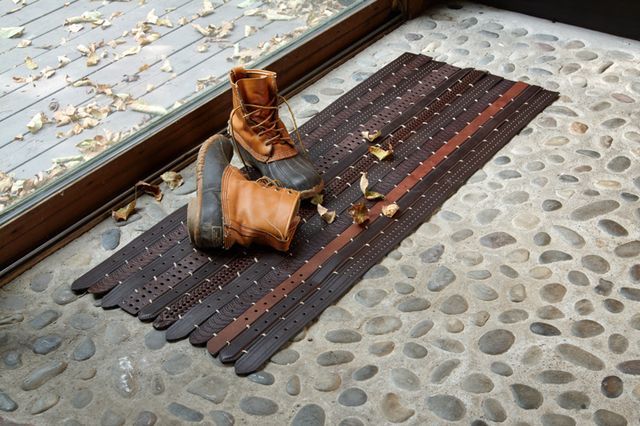


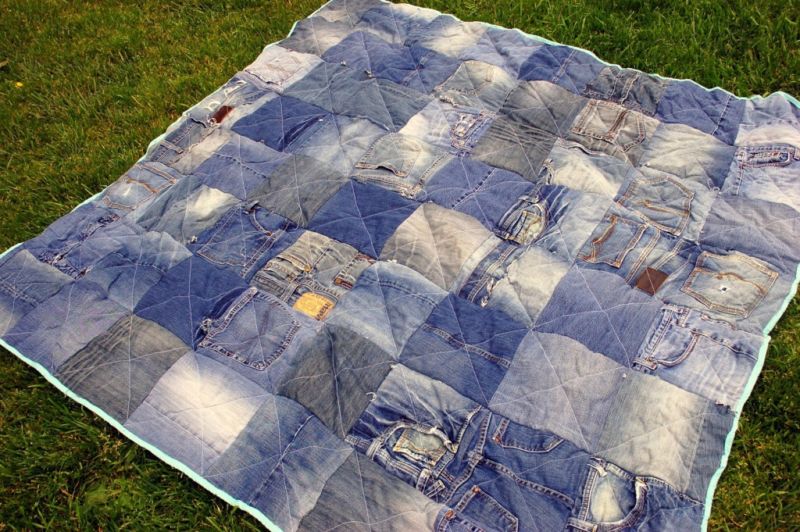

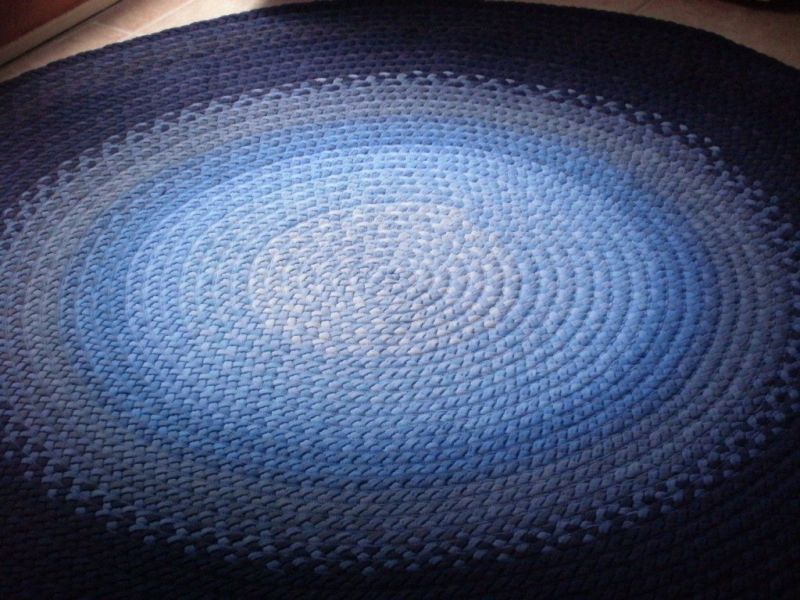
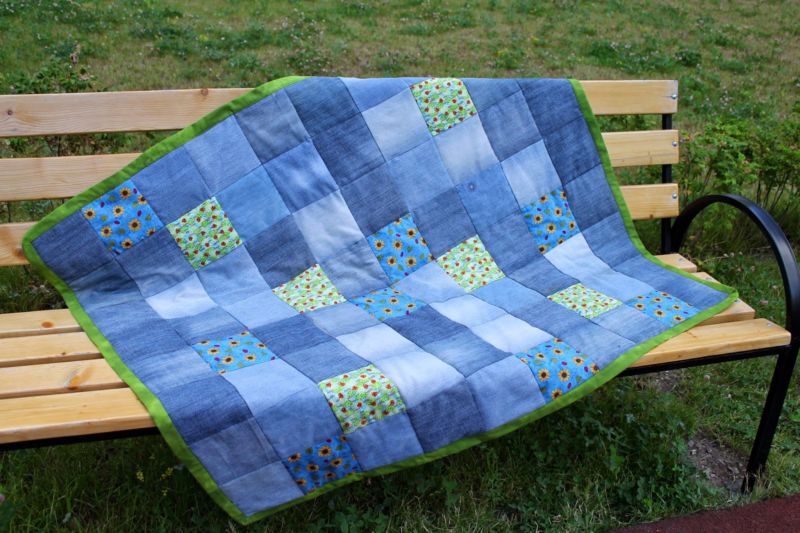
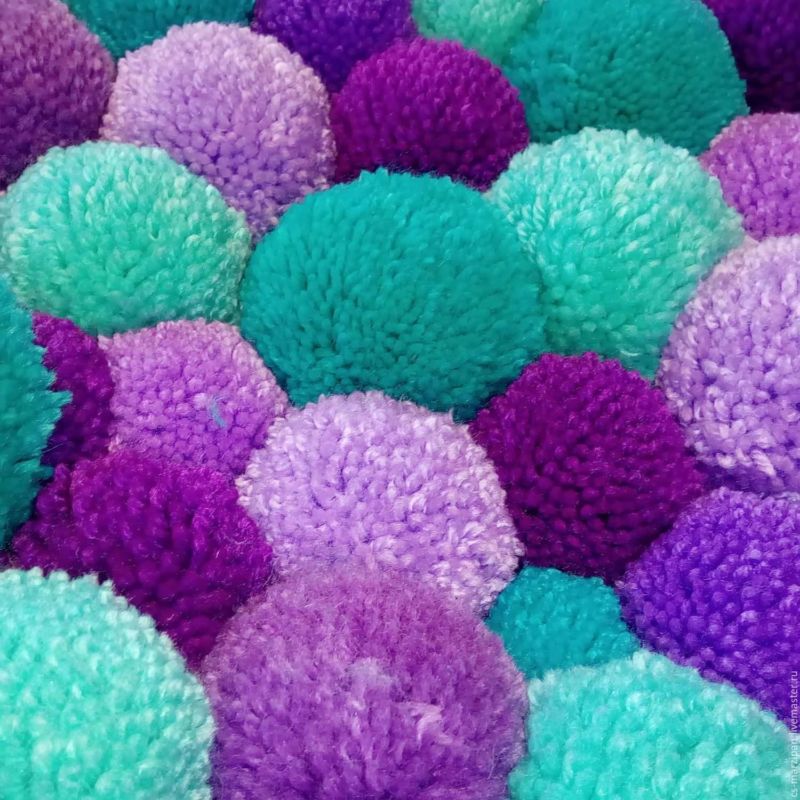
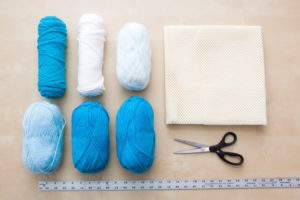
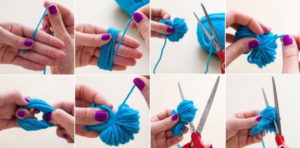


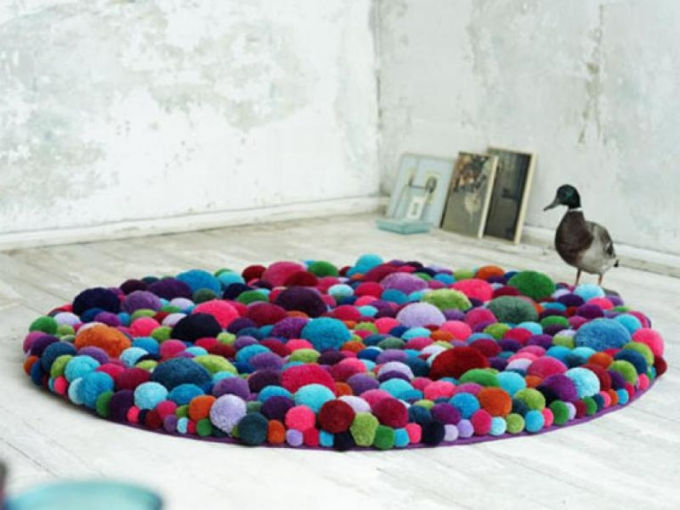

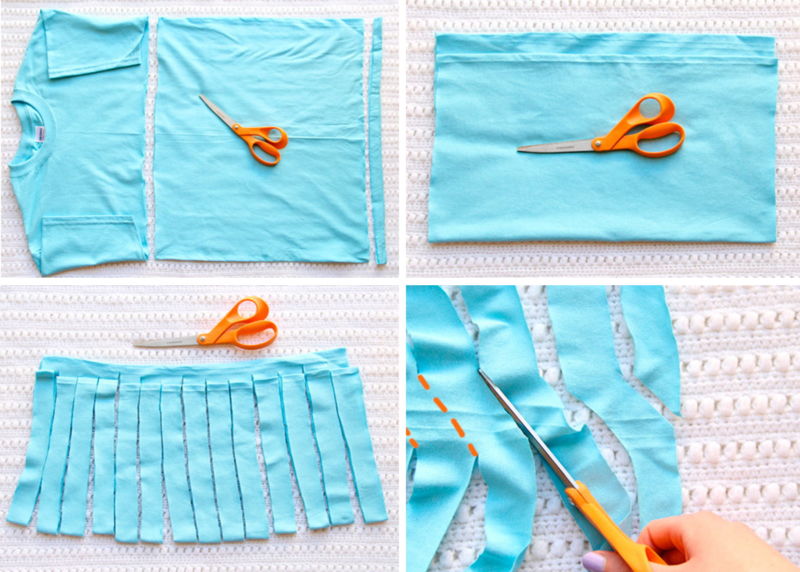
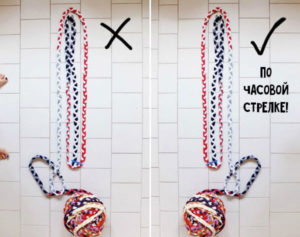
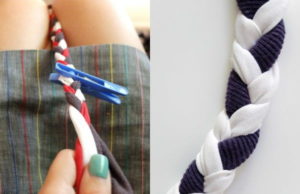
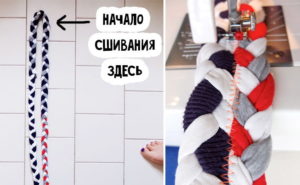
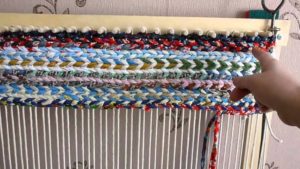
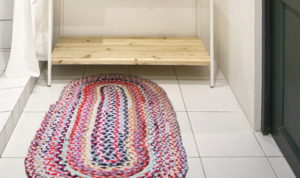
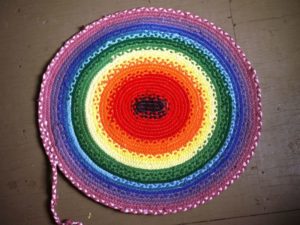
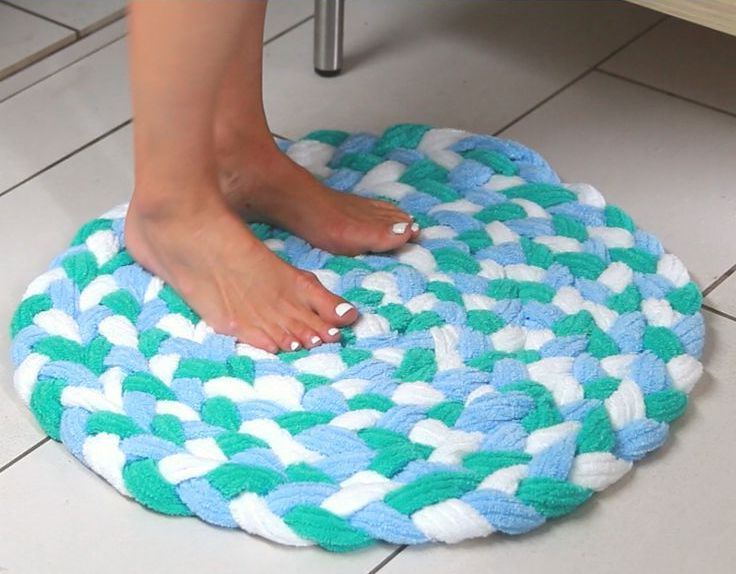
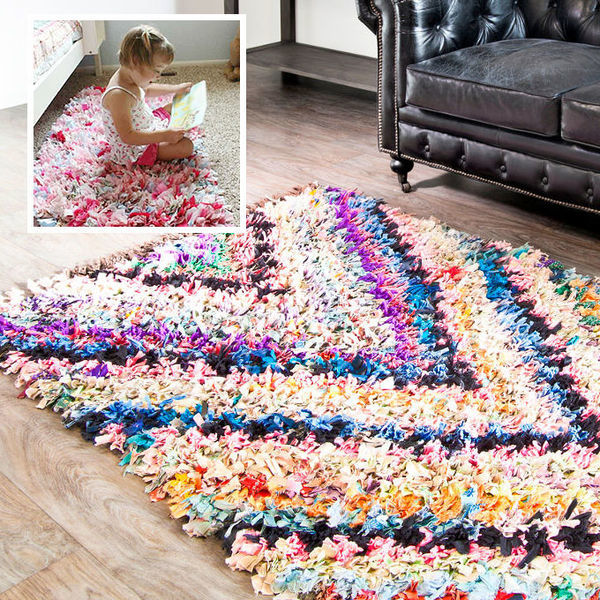
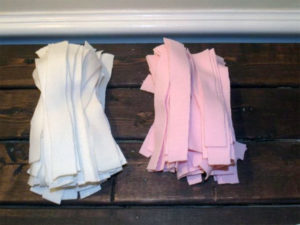
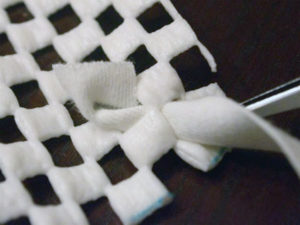

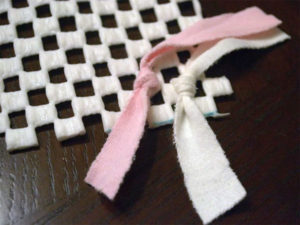

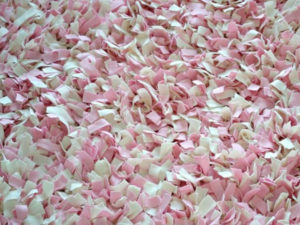
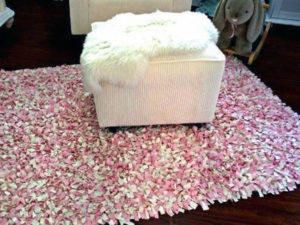
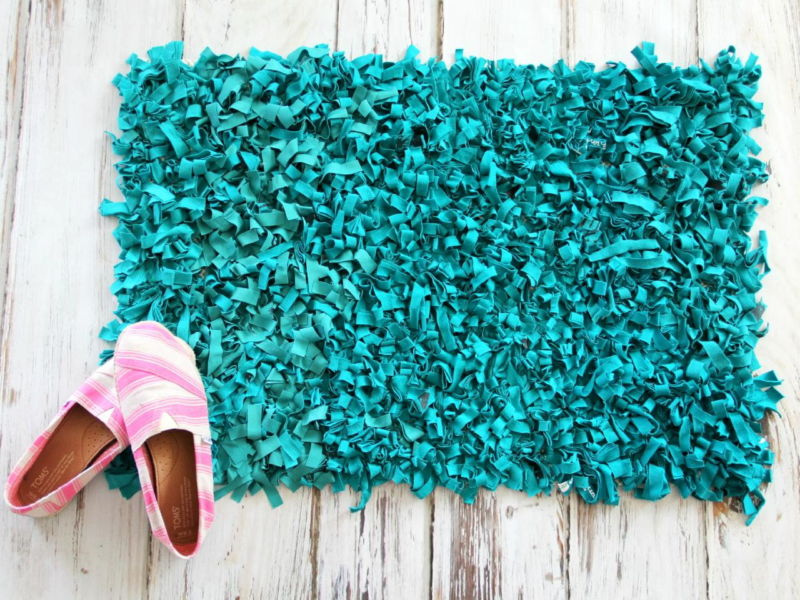
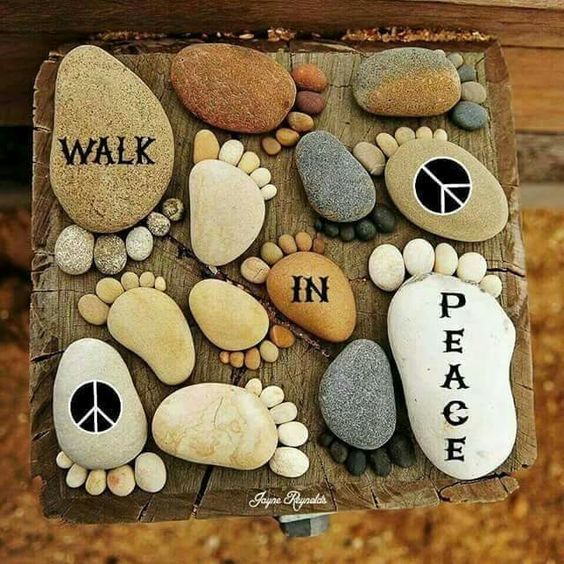
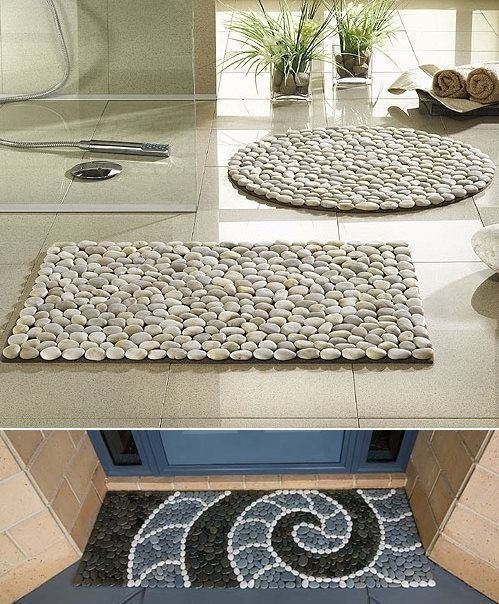
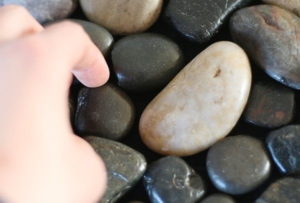
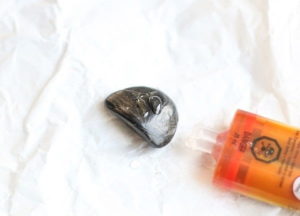
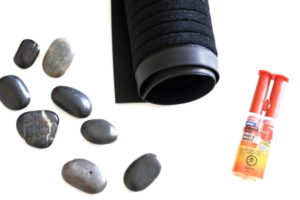
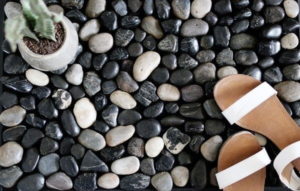
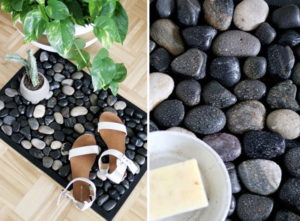
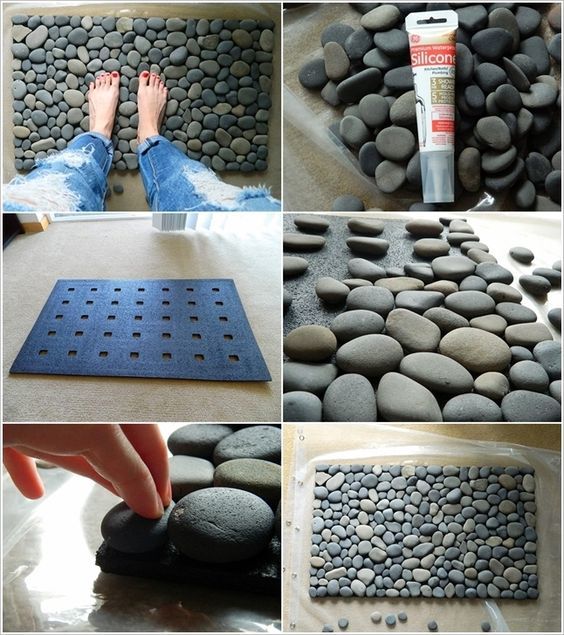

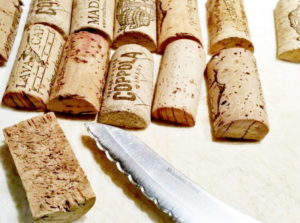
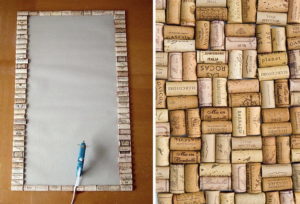
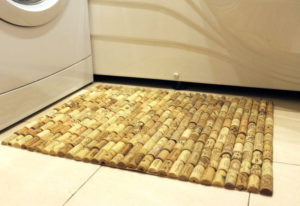

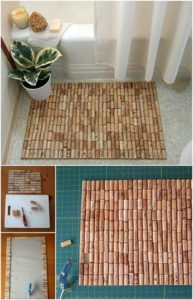
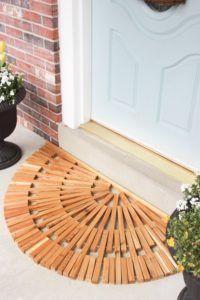
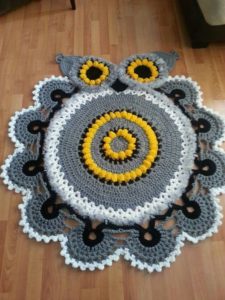
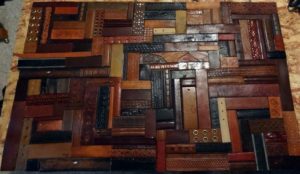
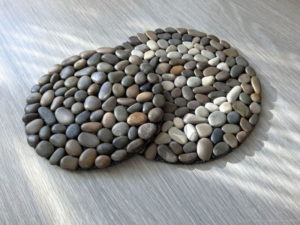
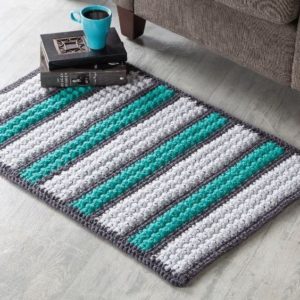
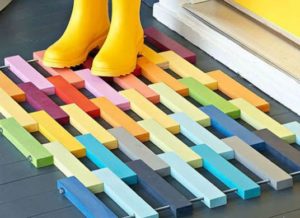

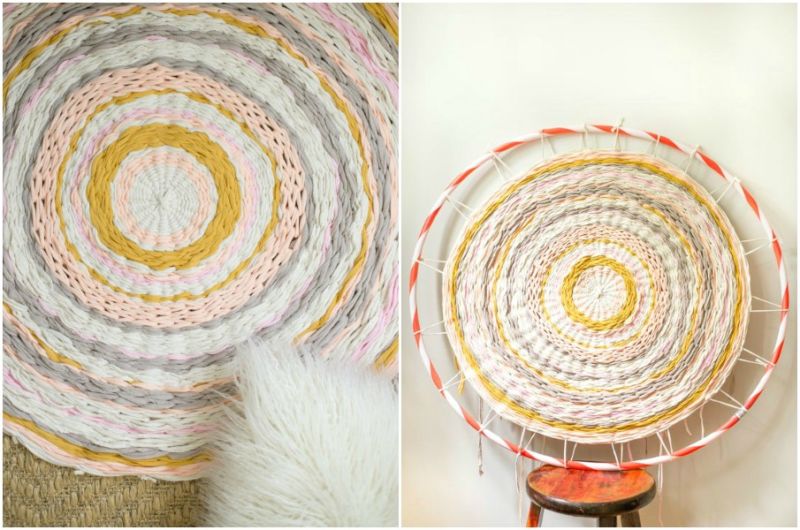
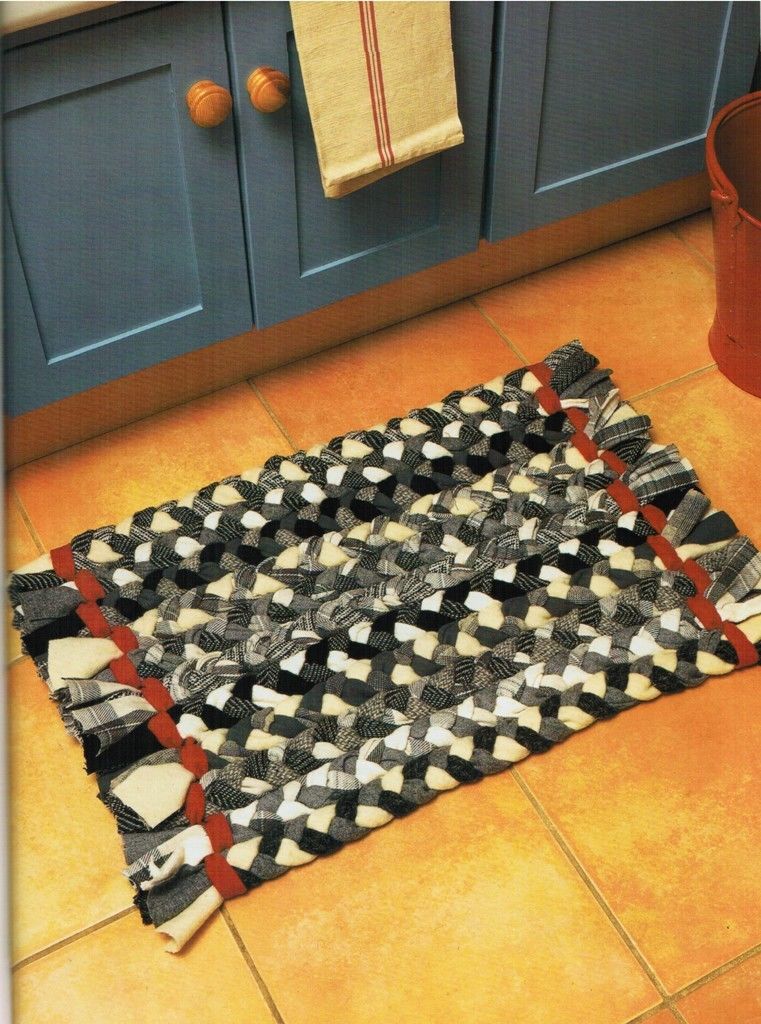
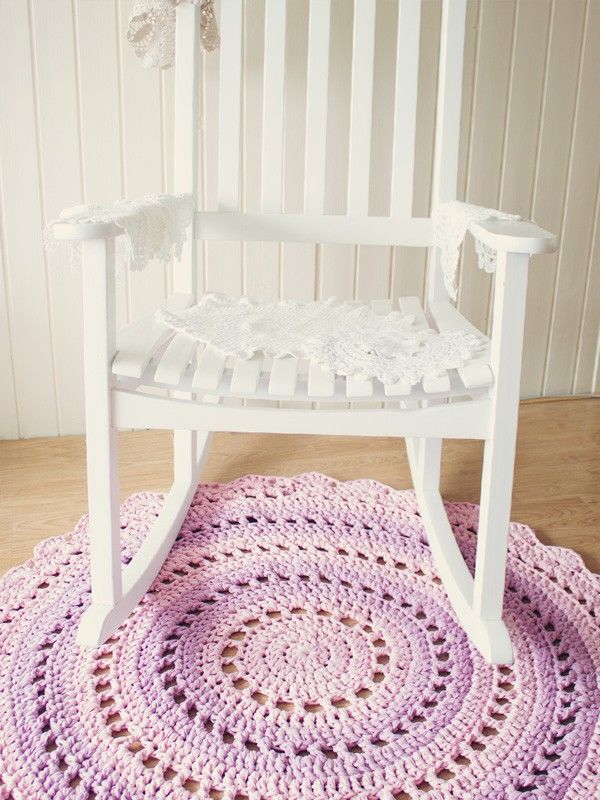
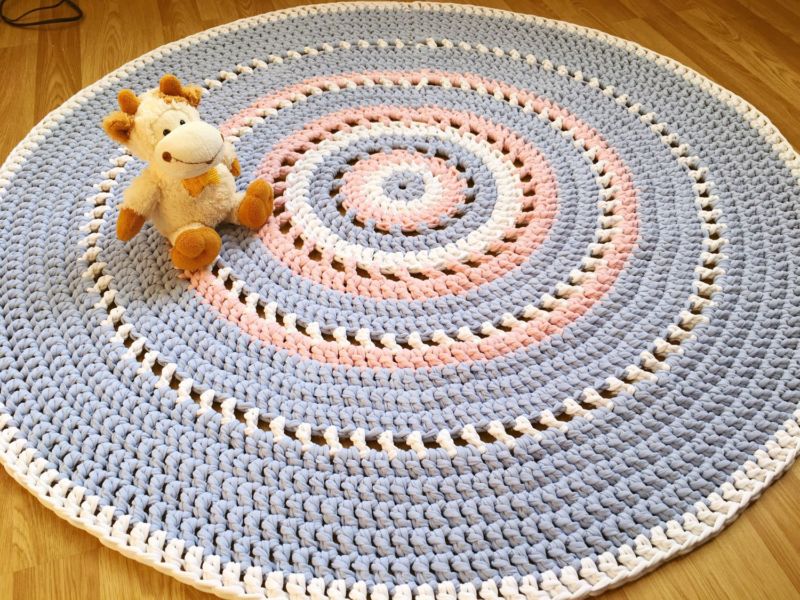
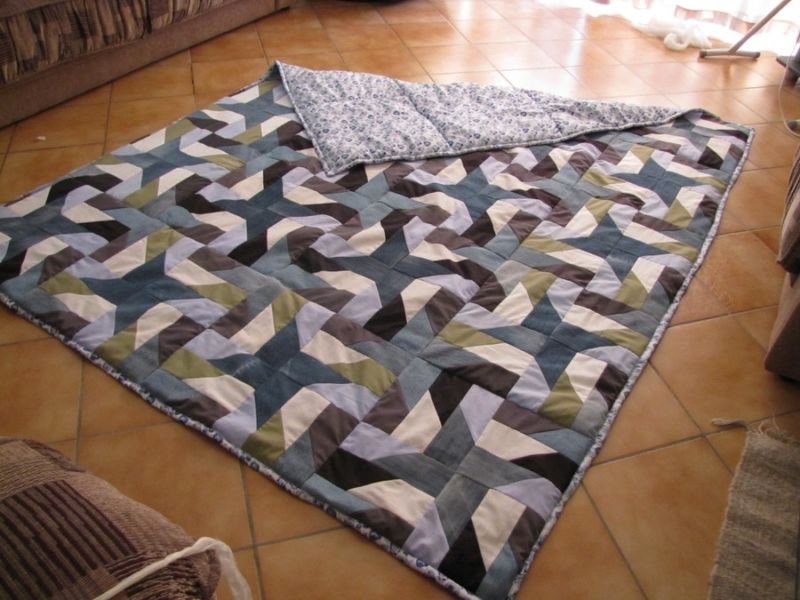
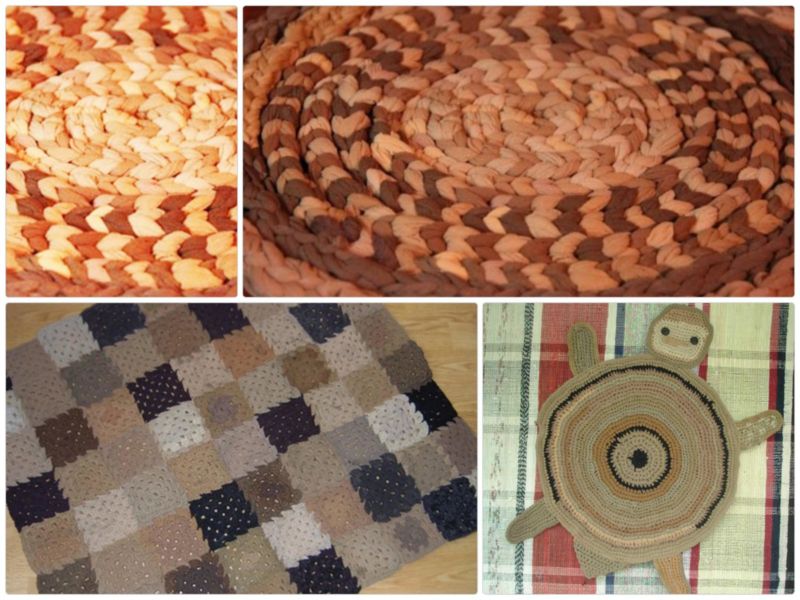
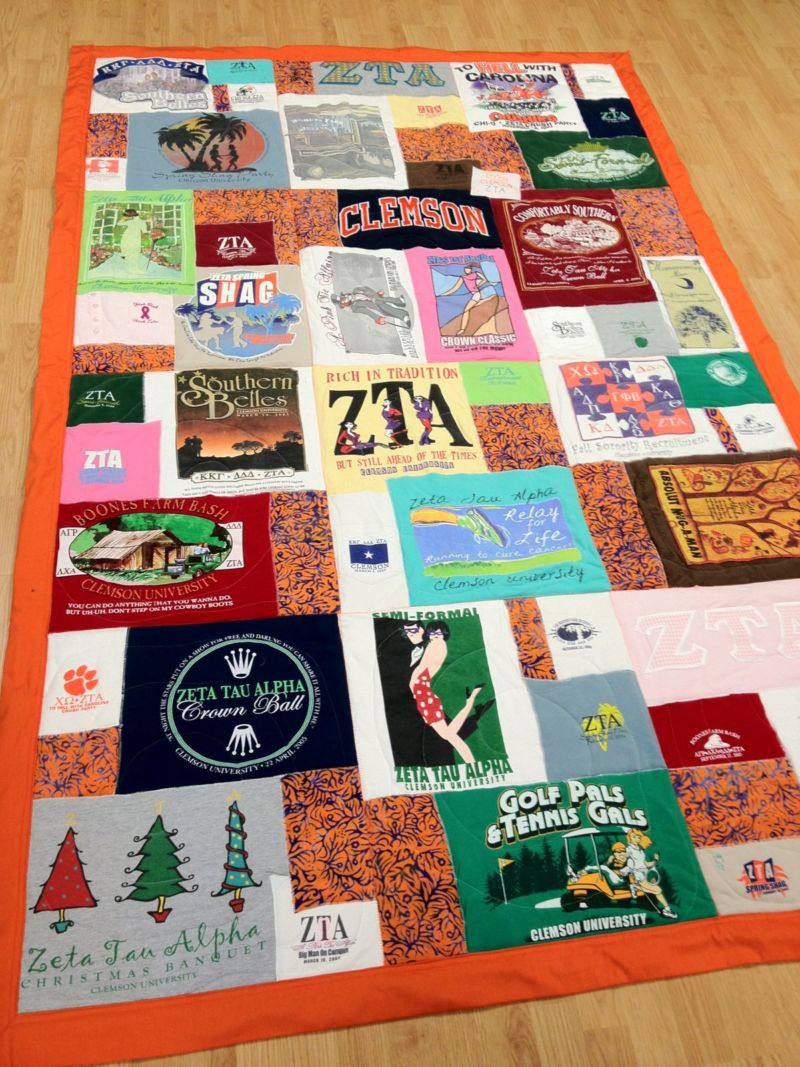
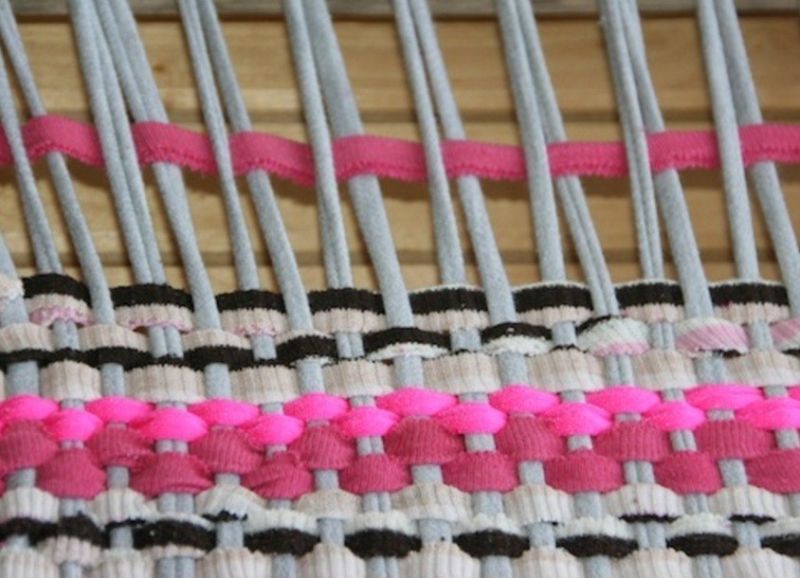
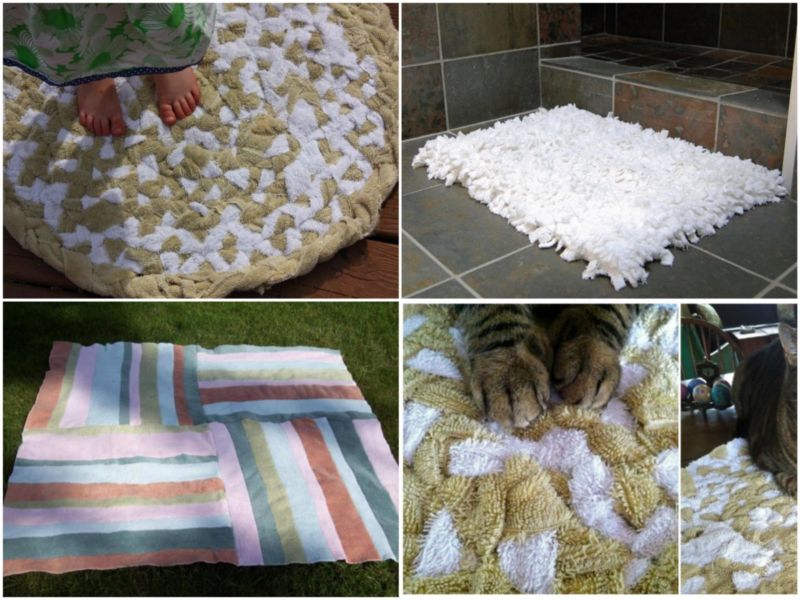
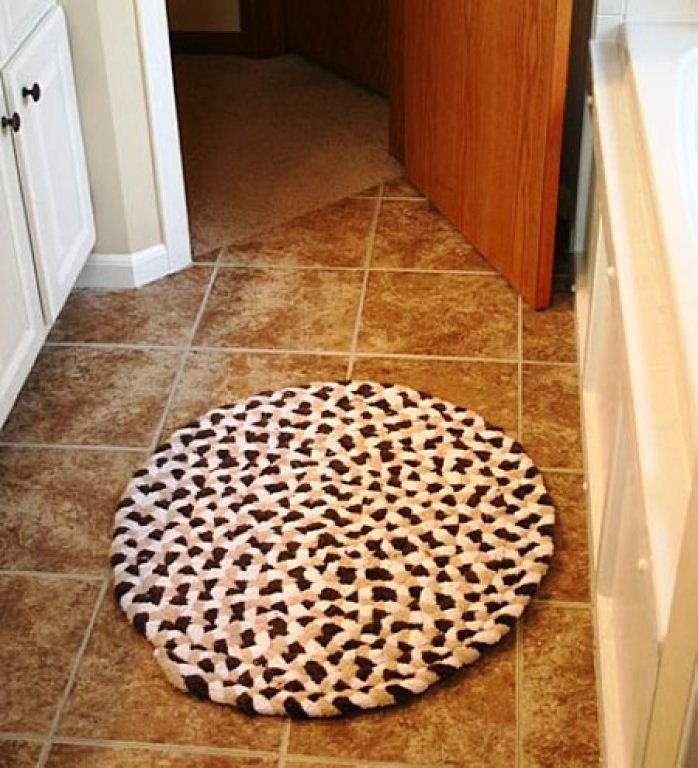
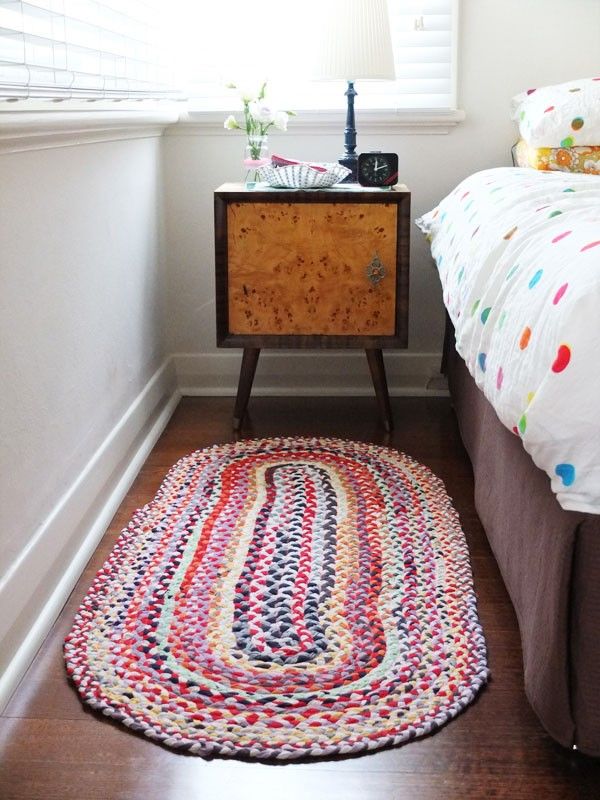
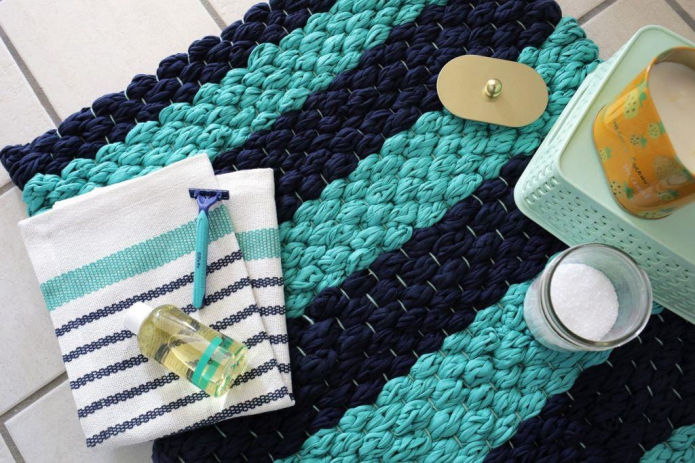
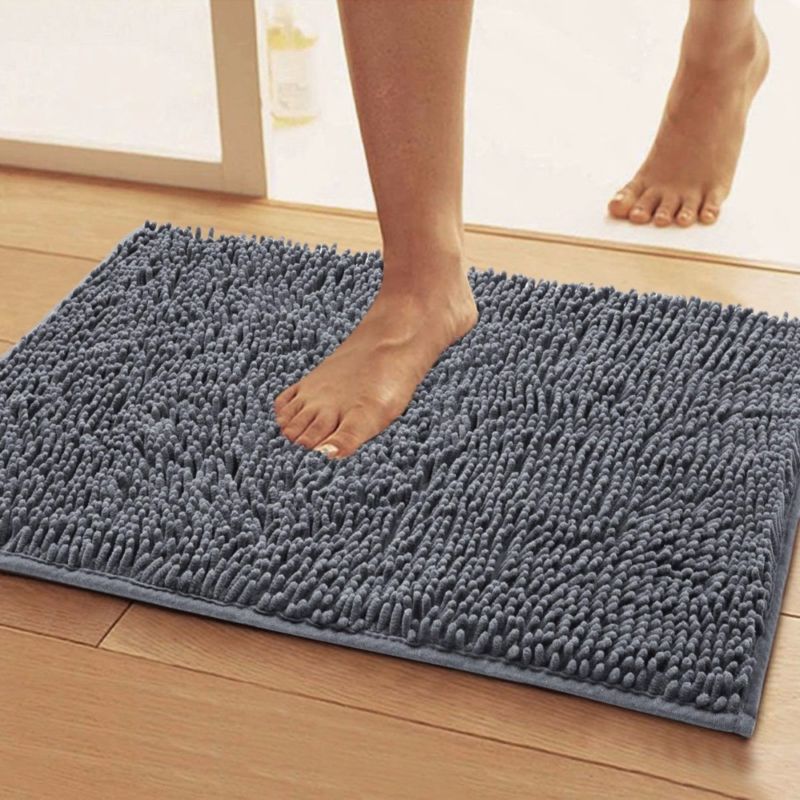
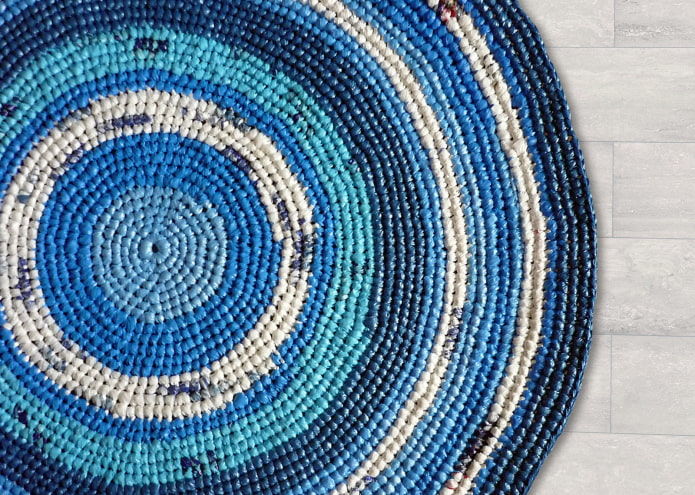
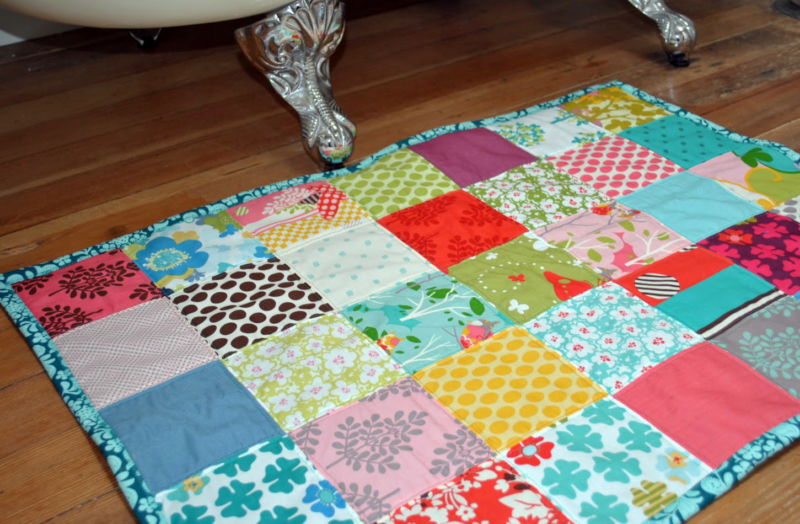
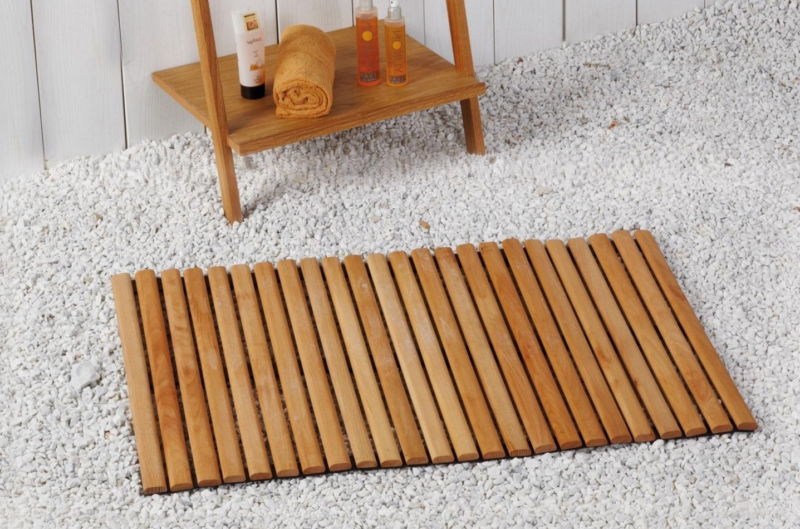
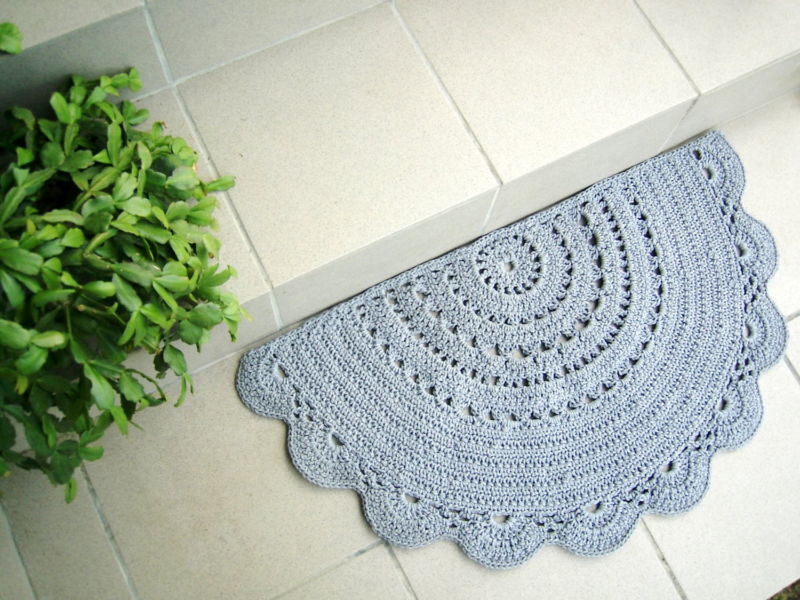

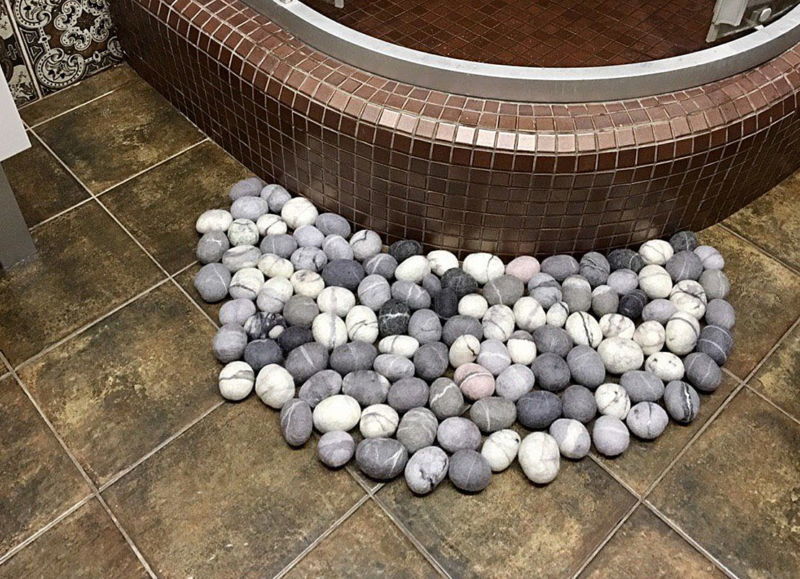
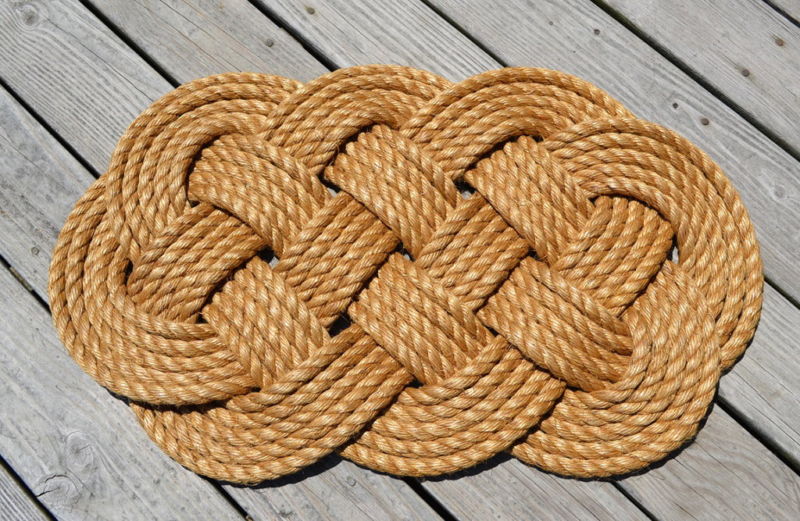
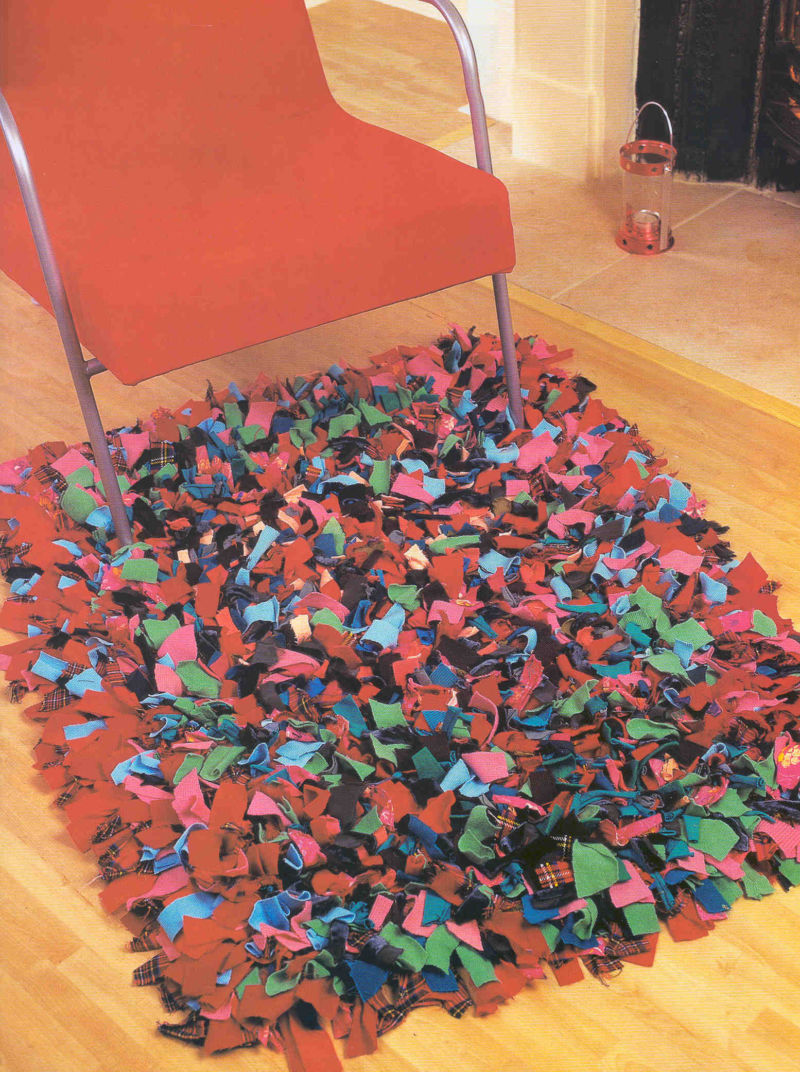
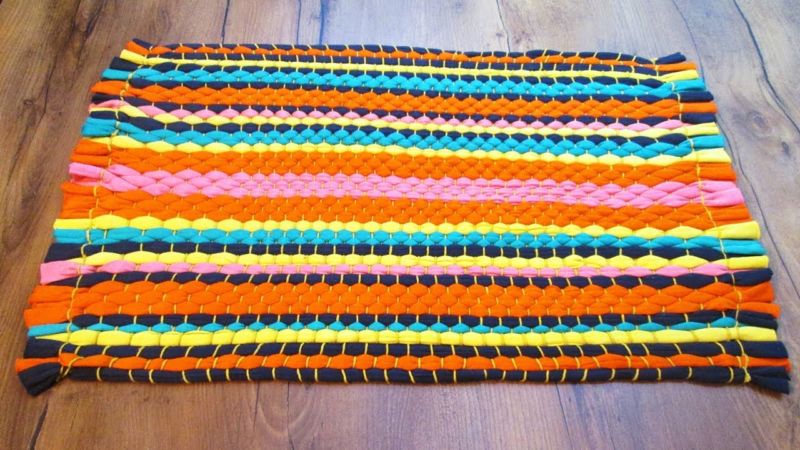
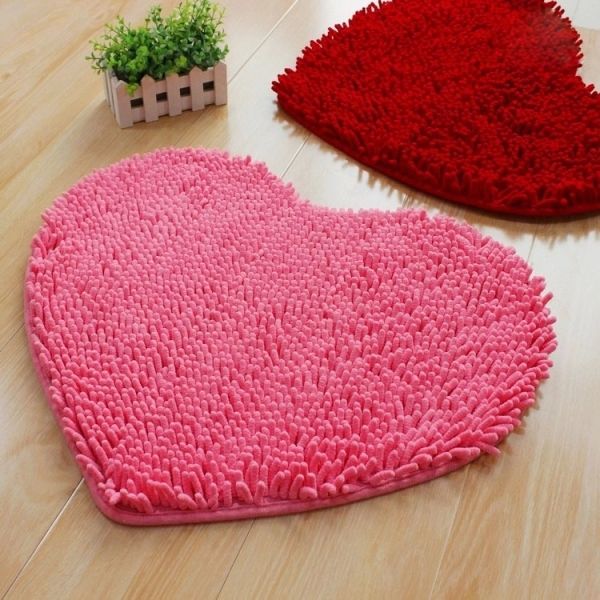
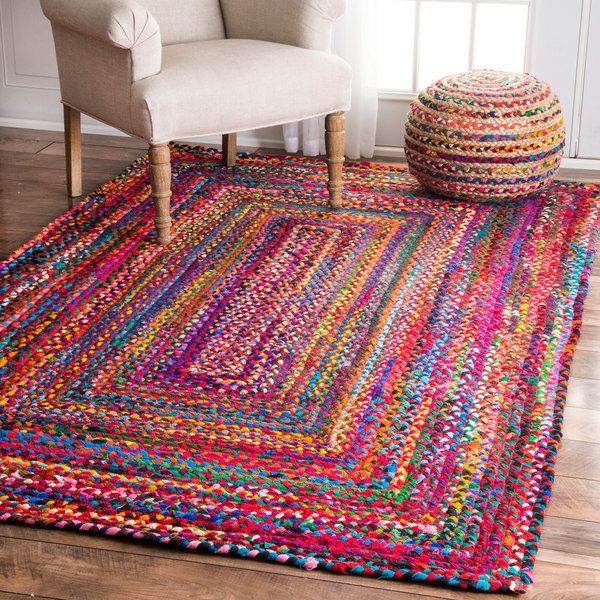
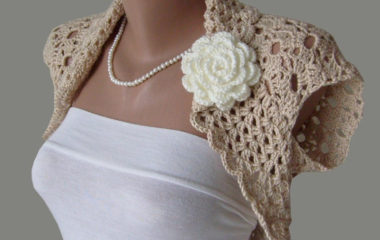
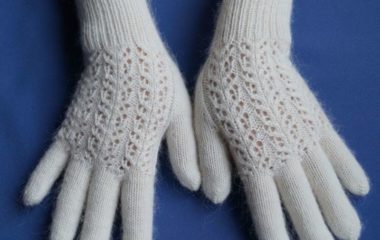
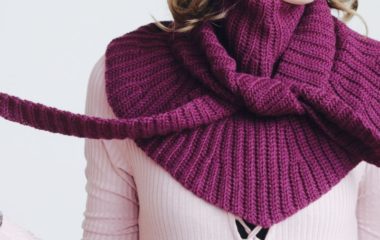

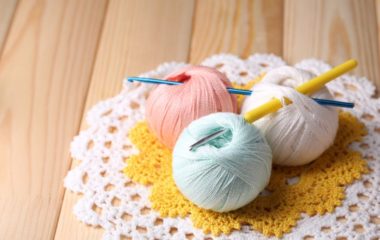

Gorgeous work!!!!